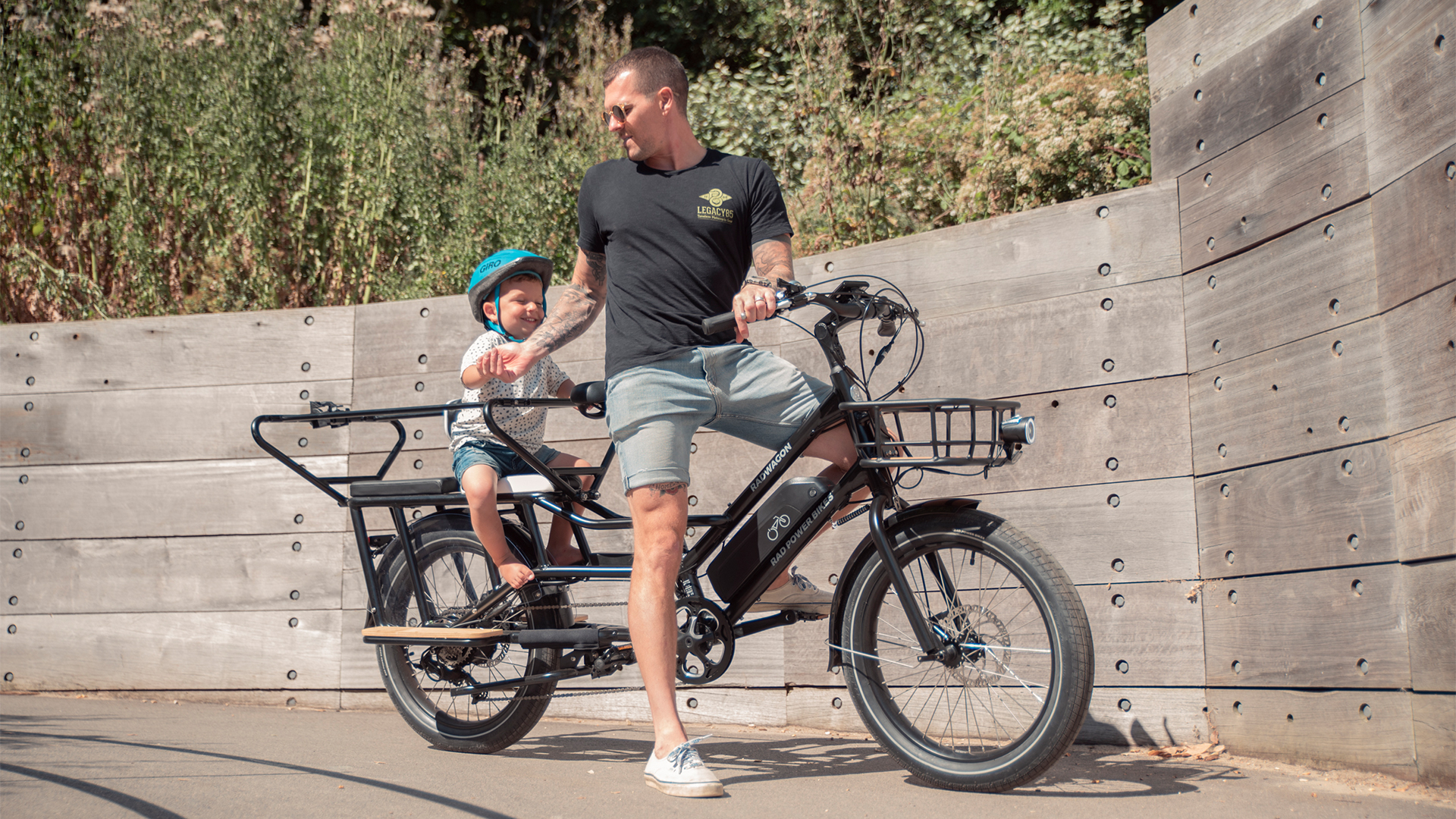
As I look down at the small digital display mounted to the bars of my ageing Rad Power Bikes RadWagon 4, the small odometer informs me that I’ve clocked up over 2,000km (1,242 miles) in the three years I’ve owned it.
During my custodianship, the RadWagon has chiefly acted as school run transportation, with the rear cargo area sporting two seats and safety bars - dubbed a Caboose by Rad Power Bikes - to house kids and the front boasting a metal basket for carrying school kit.
Over 1,200 miles of school run action is impressive - just think of the CO2 that’s not entering the atmosphere - as well as the time saved trying to find a parking spot or, worse still, attempting the walk with two dawdling children.
That’s before I even break out the calculator and work out the savings in fuel, parking, car maintenance, tax and whatnot.
The long, low and surprisingly powerful cargo hauler is sadly not available to buy in Europe anymore, seeing as Rad Power Bikes pulled out of the market last year, but that doesn’t mean you can’t get in on the action.
In fact, the electric cargo bike market is booming, with sales volumes increasing in 2022 by 37%, according to a study, with the ratio of privately owned bikes and those used for business proving a fairly equal 50:50 split.
If you’re thinking of making the jump to some electrified two-wheel transport, now is the time to do it, with a growing list of top tier brands all offering excellent models for efficiently and safely transporting precious cargo.
What is the best cargo bike configuration?
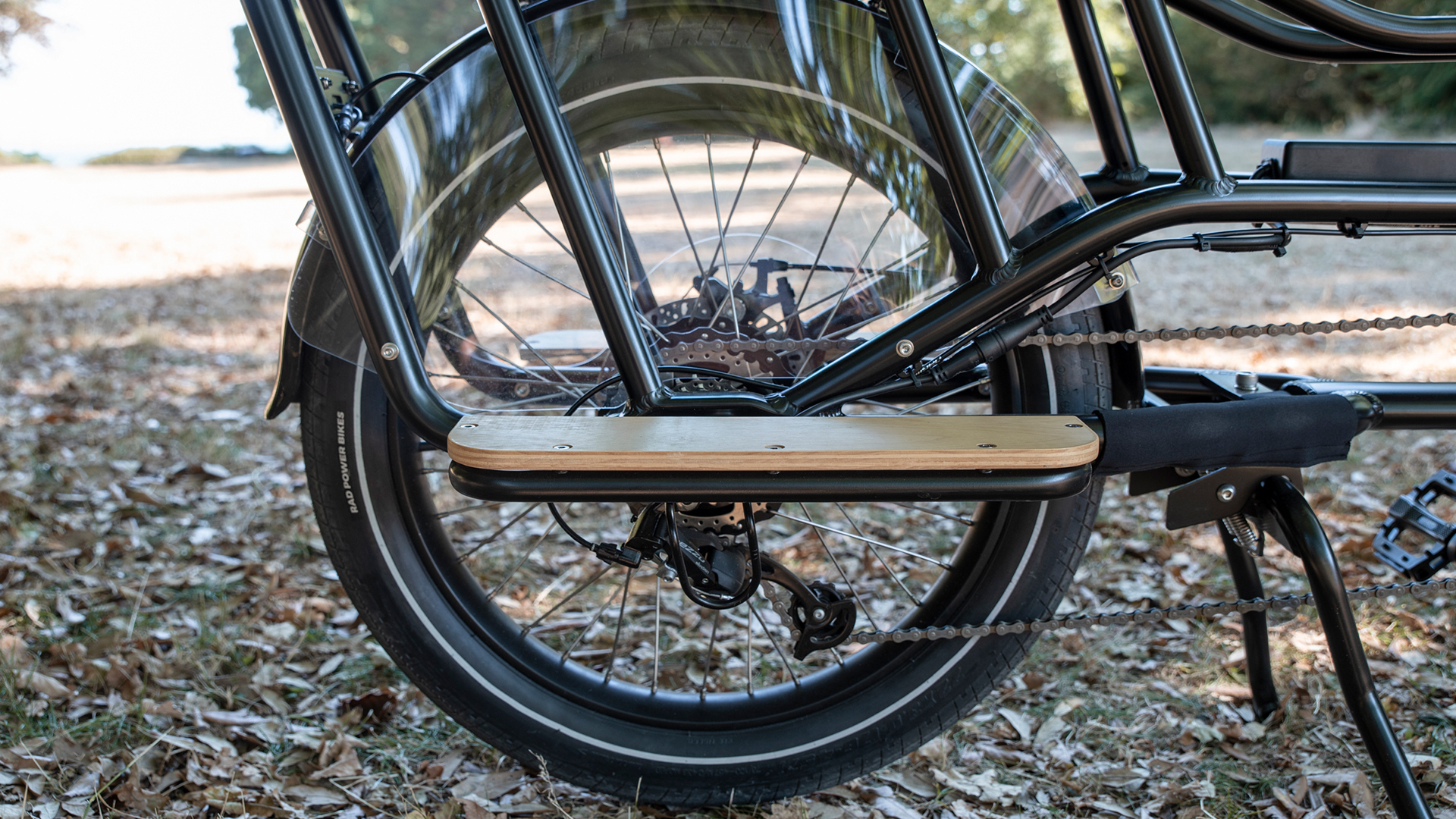
Electrically-assisted cargo bikes tend to come in three main configurations: a slightly stretched wheelbase with the cargo area at the rear, an elongated Dutch-style box bicycle set-up with the load at the front and a steering arm controlling the front wheel, or a tricycle layout with cavernous cargo area and two wheels at the front.
I've ridden all of them and there are pros and cons to all styles of e-cargo bikes... finding the right one is really about personal preference.
The tricycle-style bikes are by far the most stable and can carry the largest loads, thanks to them having three wheels to spread the weight over and three points of contact with the road below.
But these bikes tend to be bulky, heavy, impossible to thread through traffic and difficult to store in cramped spaces.
The elongated box bike models, such as those made famous by Larry vs Harry in the excellent Bullitt model, tend to offer the most dynamic riding experience and prove extremely versatile in terms of the types of cargo they can carry.
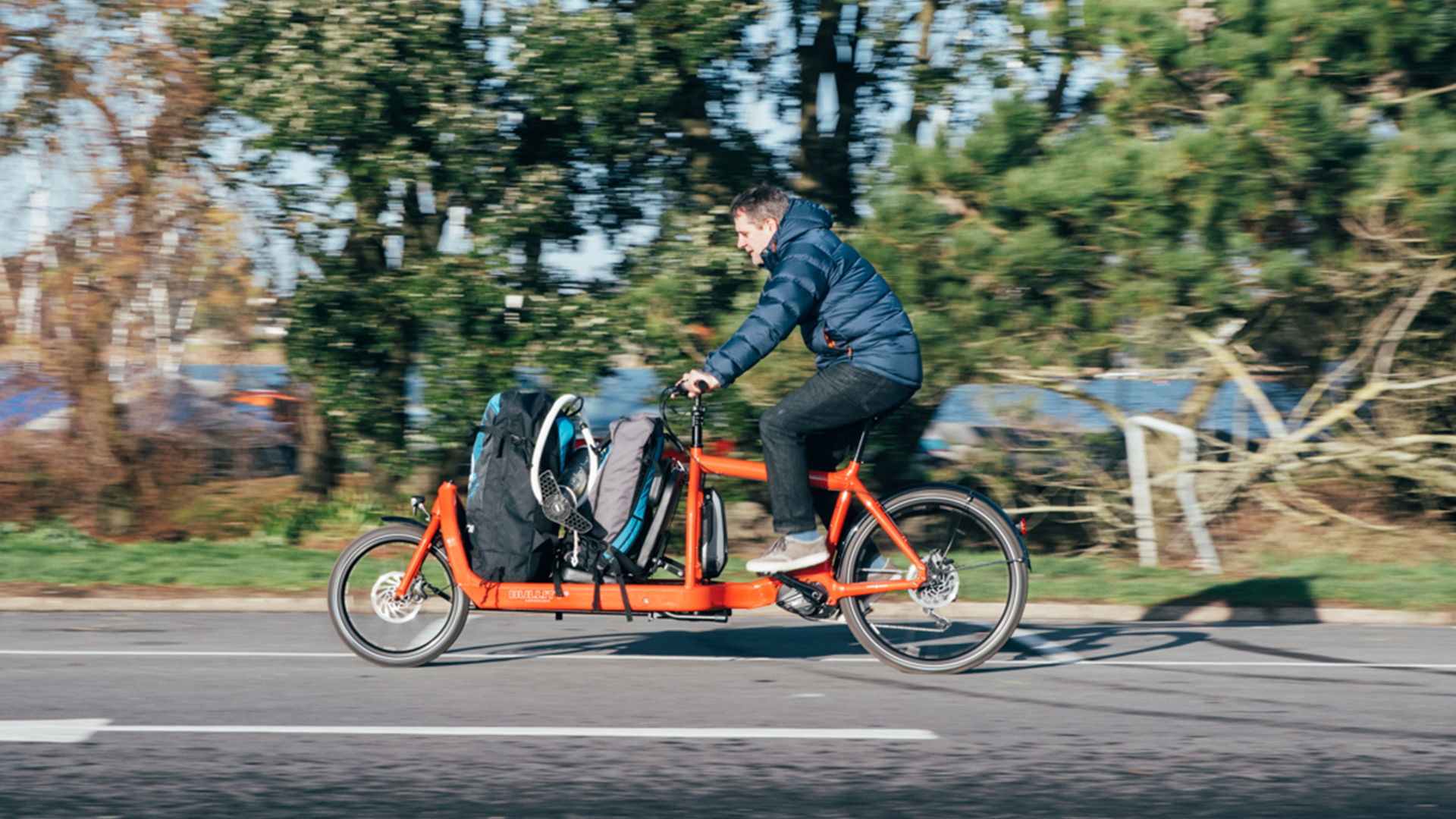
However, riding these can take a little getting used to and some parents don’t like having their kids sit way out front.
Finally, cargo bikes where the load area is located at the rear tend to be the easiest to master and refrain from exposing kids to traffic.
However, they are often limited in physical space and the amount of weight they can safely transport.
Regardless, all e-cargo bikes will also come with an electric motor and battery that assist in pedalling duties, ensuring you can transport large loads without breaking a sweat.
What’s so good about an e-cargo bike?
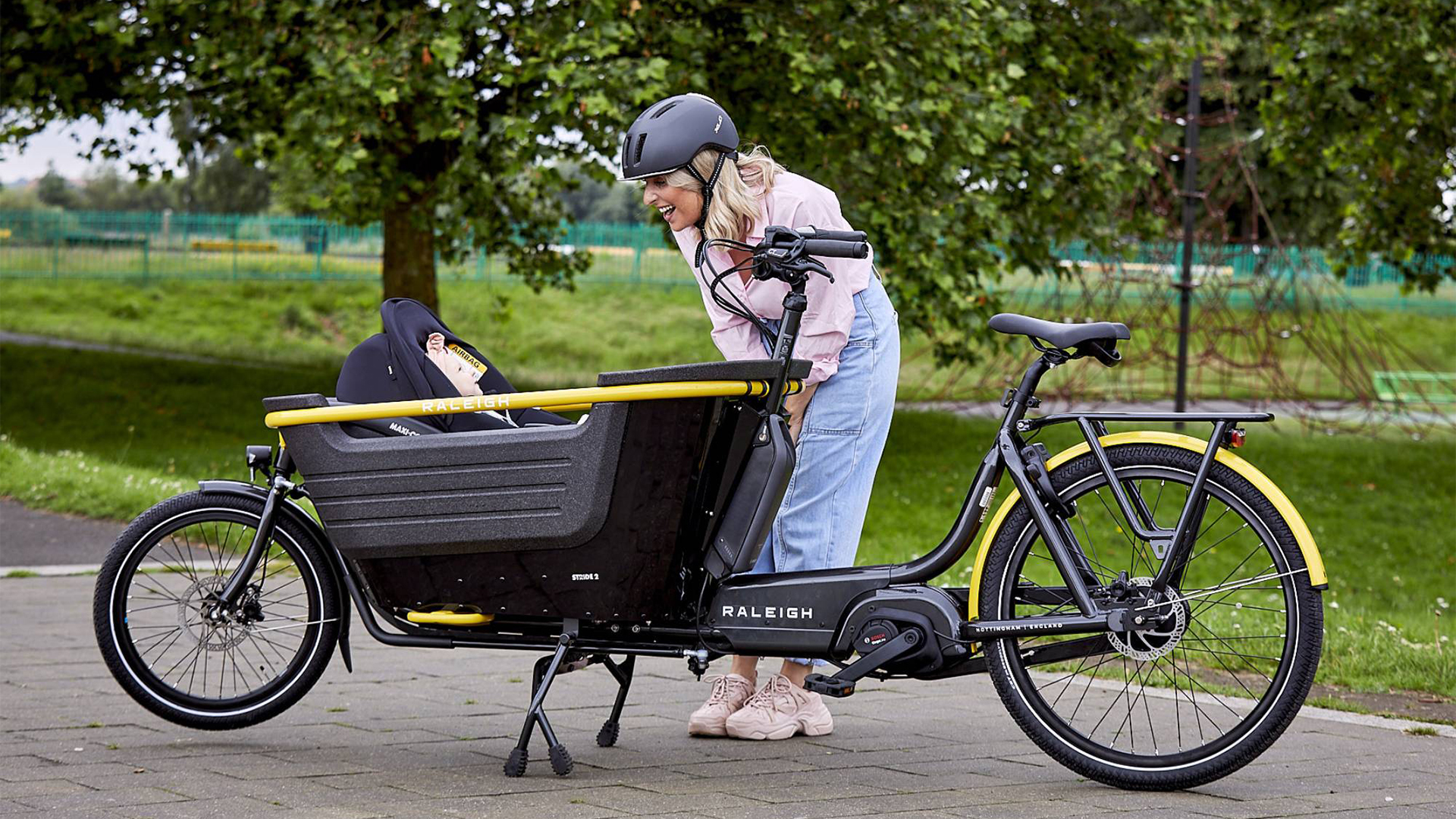
There’s lots to love about an electric cargo bike, and once you get over the fact they tend to be heavier, bulkier and a little more unwieldy to pilot (at first) compared to the best e-bikes, you’ll likely find it difficult to live without one.
As previously mentioned, I have ridden all of the various configurations mentioned above and have to say the Larry vs Harry Bullitt is up there with the best in terms of performance.
I’m pretty confident on two wheels, having raced motorcycles and bicycles, so I found it a joy to ride fast, and its family-orientated configuration, with two very comfortable seats at the front, was a firm favourite with my kids and their mates at school.
However, the aforementioned RadWagon 4 has been the workhorse of the family, serving daily for over three years, depositing kids at school and ferrying kit to the beach when the sun is shining.
I ride it, but my wife has probably clocked up the most mileage, using it as a daily office commuter alongside kiddy transportation.
We both agree that the overarching highlight of an electric cargo bike is the much-needed assistance a powerful rear hub motor and external battery pack affords.
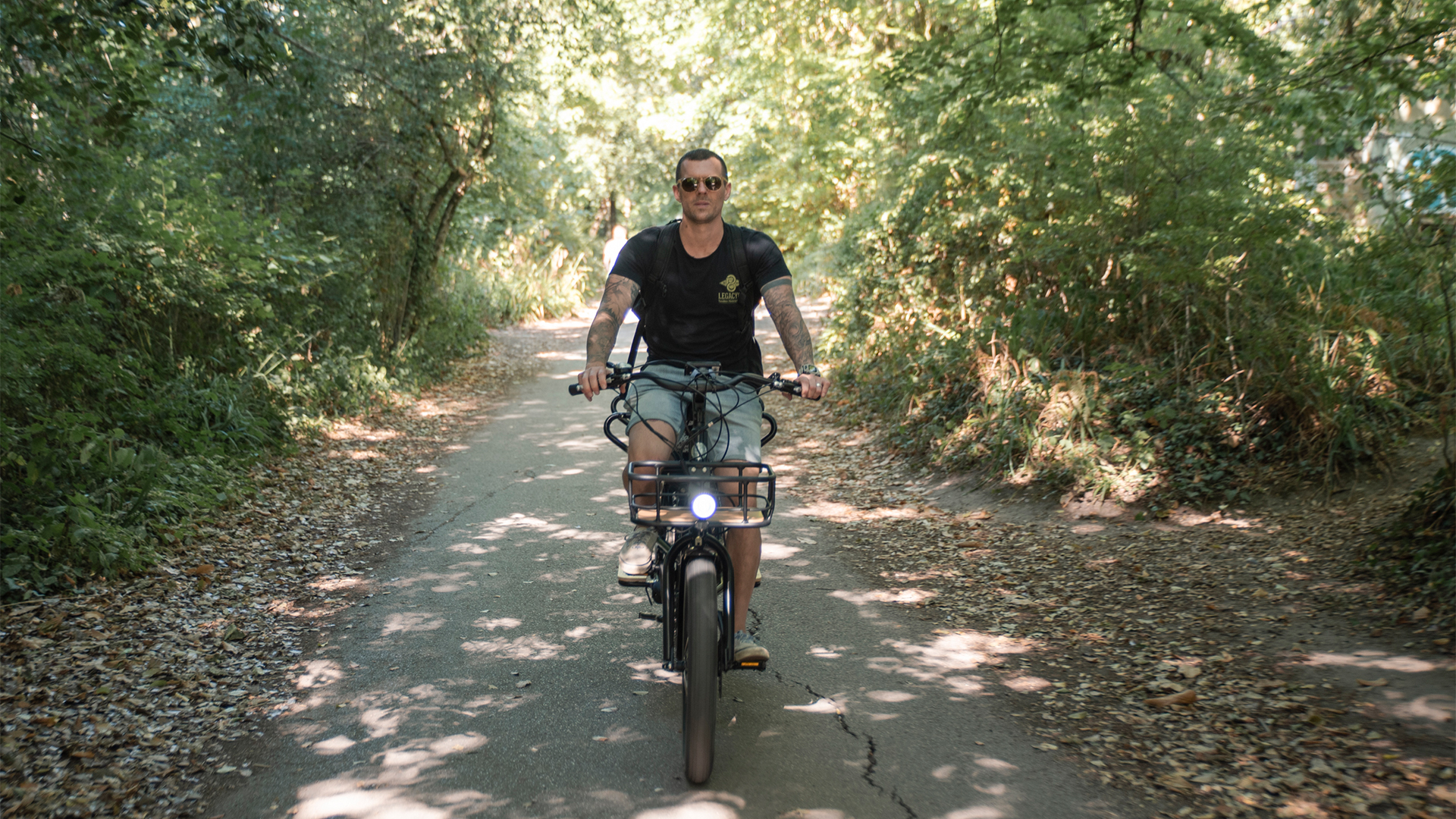
The RadWagon I own features a twist throttle, which helps get the bike moving from a standstill when fully laden, while the crank sensor always delivers just enough power to assist on the journey.
It takes a few rides to get used to balancing the correct mechanical gear selection with motor assistance level (opting for full power is not the way to go for greatest efficiencies), but get it right and the RadWagon covers serious mileage on a single charge.
Once the batteries have been drained, I simply wheel the bike into the garden and charge from an external, weather-proof three-pin domestic outlet, so long as it isn’t raining.
Even with a daily school run of around four miles, I often only need to charge once every couple of weeks.
How do you transport kids safely?
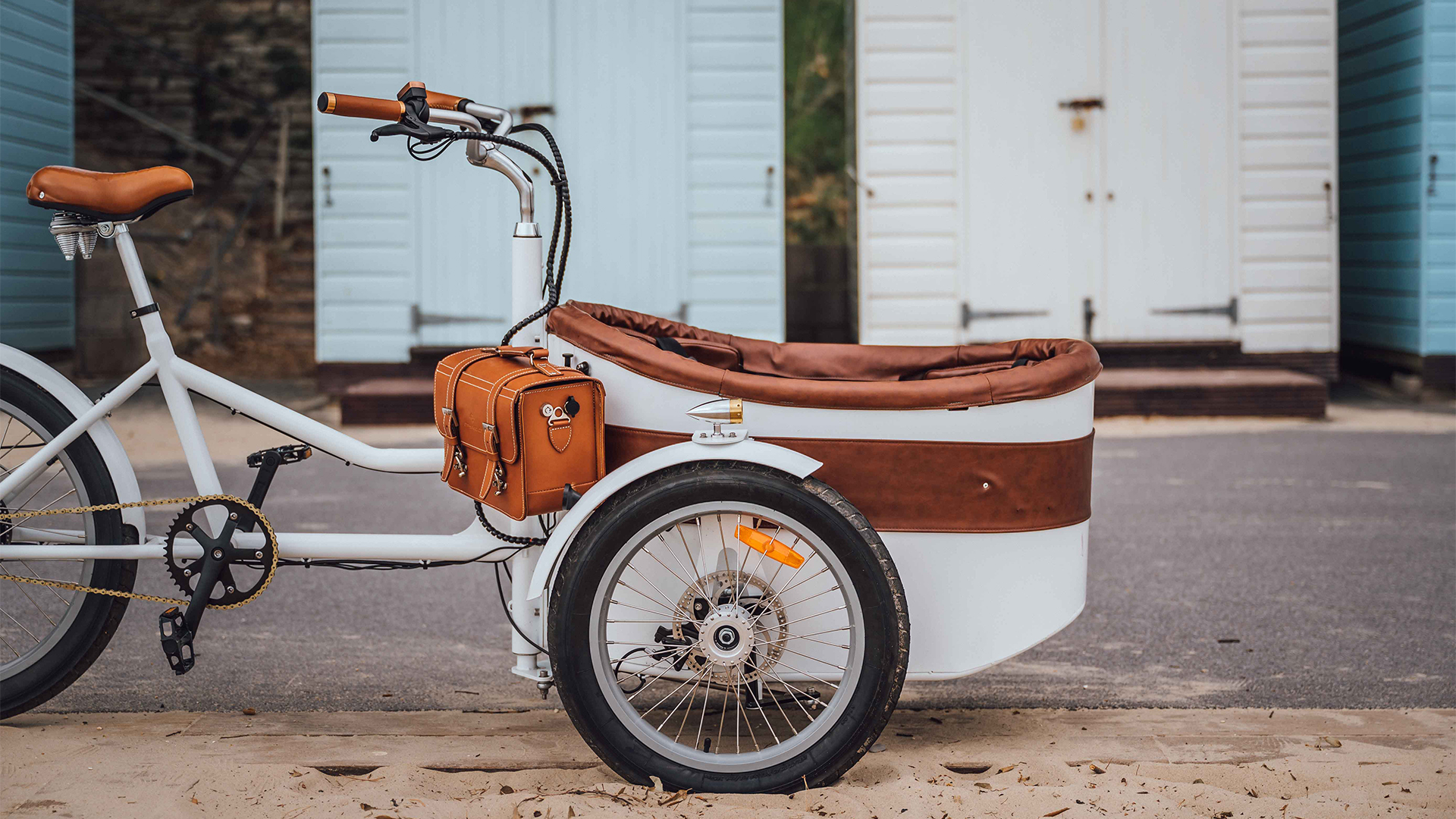
Cargo bikes are designed to be versatile and the load space on most models can be configured to house all manner of accessories. Take something like the Tern GSD, for example, as this can safely house two Thule Yepp Maxi seats or a giant box for carrying shopping on the back.
It is often a case of simply bolting on accessories that allow you to configure the bike to exactly your specification. Only have one sprog? That’s fine, as you can mount a single child seat and add a cargo box behind it for extra carrying space.
The RadWagon I own features two leather bench seats (one official and one cheap aftermarket option), each with a back support for safety, wooden running boards so my kids - now 4 and 8 years old - can rest their feet and safety bars that run around the entire cargo area so they don’t fall out.
There's no denying that there is an inherent risk every time you hop on a bicycle, but these can be mitigated by sticking to bike paths or taking quieter routes, increasing visibility with the right clothing and ensuring everyone dons the correct safety kit.
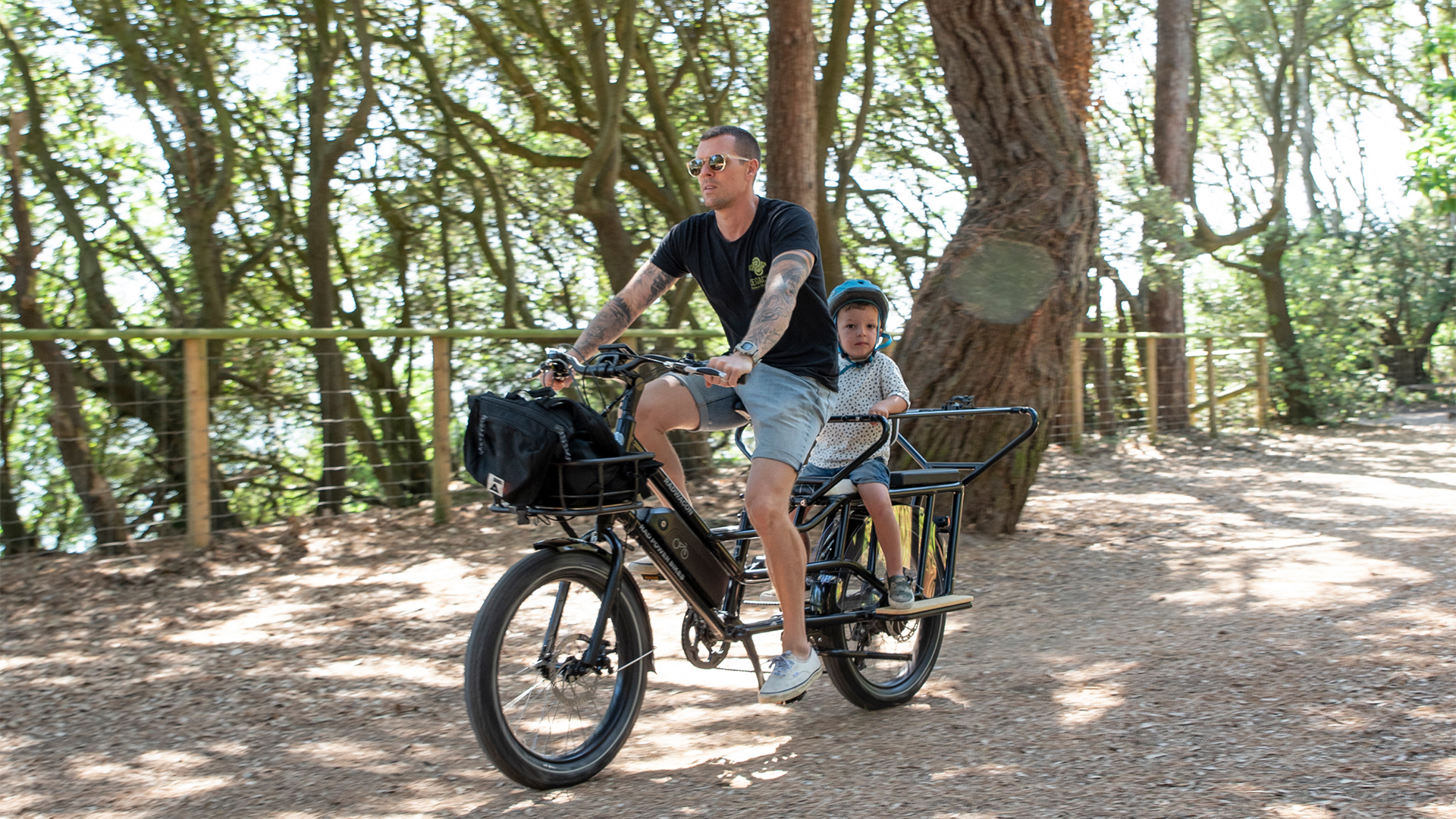
Naturally, we all wear helmets when out on a ride (ahem, aside from the early photo shoot above, as we were off-road), while the majority of e-cargo bikes, including mine, come with super bright Daytime Running Lights for added visibility.
There are even brake lights that illuminate when you slam on the anchors, which take power from the large battery packs fitted to the frame so there's no worries about them running out of juice.
Of course, the different styles of e-cargo bikes all have their pros and cons when it comes to carrying kids safely.
The 'out front' models from Riese & Muller, Larry vs Harry and Raleigh to name a few, can often be specified with seat belts, while some of the three-wheelers I’ve tested have been big and powerful enough to transport four kids with harnesses.
Make sure to check the maximum haulage weight and then do some calculations when it comes to weighing in the rider and children. Despite my offspring growing rapidly, we all still fall below the 158kg max payload threshold and can still use the bike today.
Are electric cargo bikes expensive?
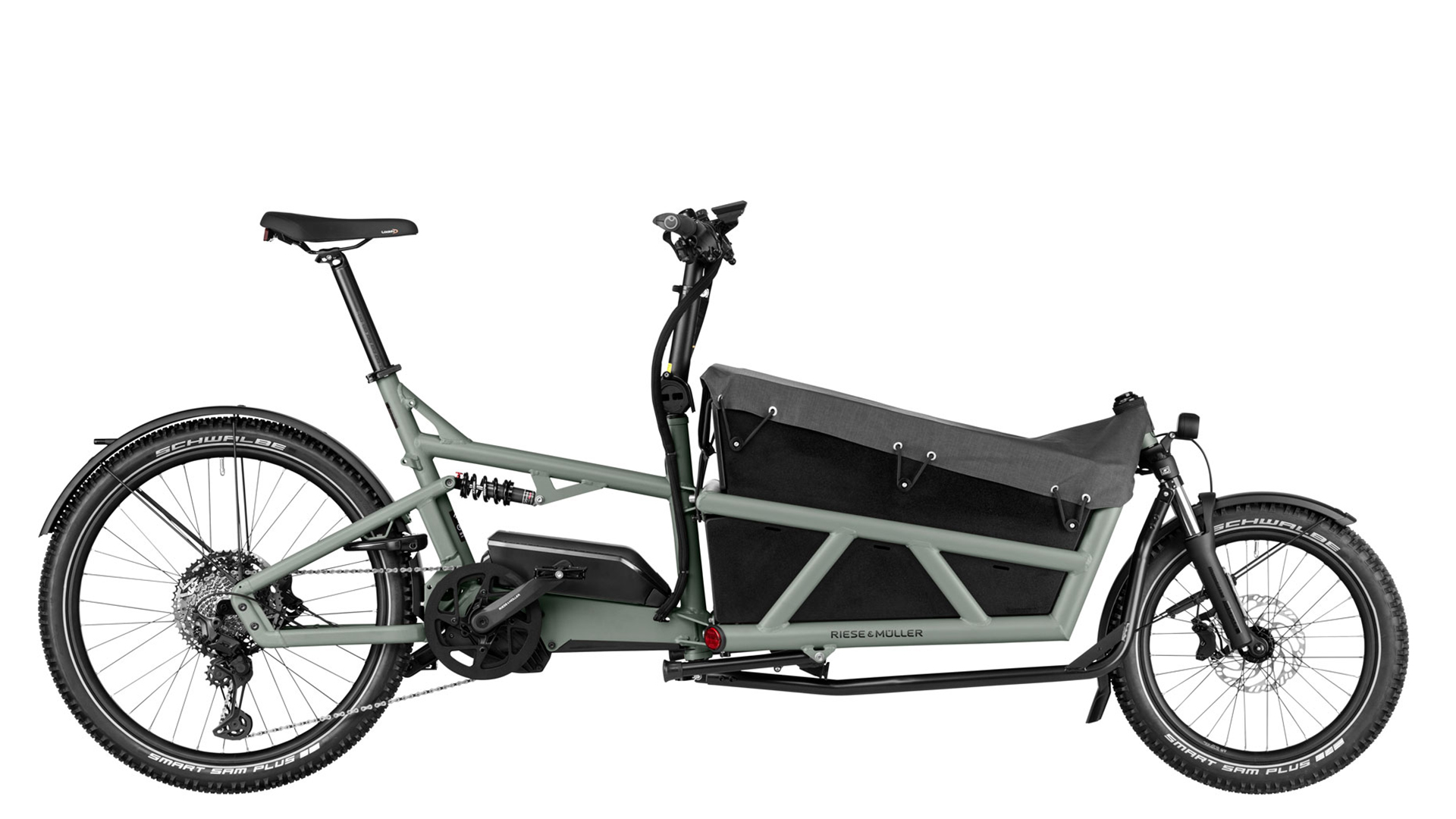
This really depends on the specification of the electric cargo bike in question, as prices range from around £1,500 for the cheapest models to well over £12,000 for specialist machines from the likes of Riese & Müller.
The budget will go towards the quality of the electric motor and battery system, with Bosch Cargo Line and the Shimano Steps EP800 crank-based units favoured by the more premium offerings.
At the other end of the price spectrum, cheaper rear-hub motors and 'bolt-on' external battery packs are likely to feature, alongside budget-friendly components, such as cheaper brakes, cranks and gearing.
That said, the RadWagon I have been running for several years definitely falls at the 'budget' end of the spectrum but it has proven faultless.
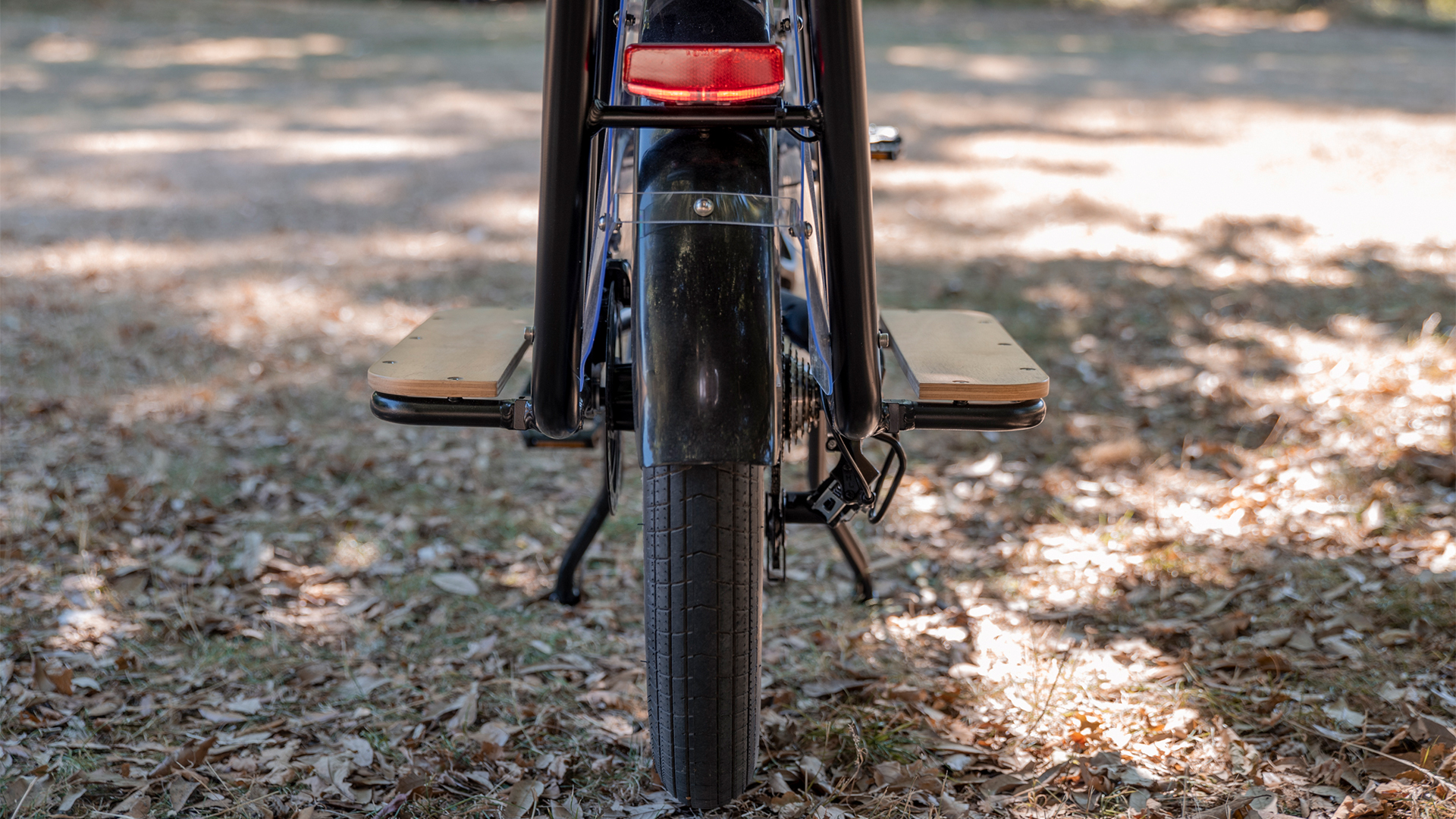
Aside from typical maintenance, such as replacing the brake pads (they wear quickly due to the mass they have to regularly stop) and a centre-stand spring that broke, there’s been very little to deal with.
Granted, the initial outlay (it cost £1,999 at launch) might appear hefty, but I’ve saved thousands of pounds on fuel, parking and general vehicle wear and tear over the years, not to mention the mental and physical health benefits of riding in the fresh air most days.
Also, it is worth noting that residual values for well cared-for e-cargo bikes are strong, so even when the kids do finally grow out of it, you'll likely get a good chunk of change back when sold on the used market.
But what about the weather?
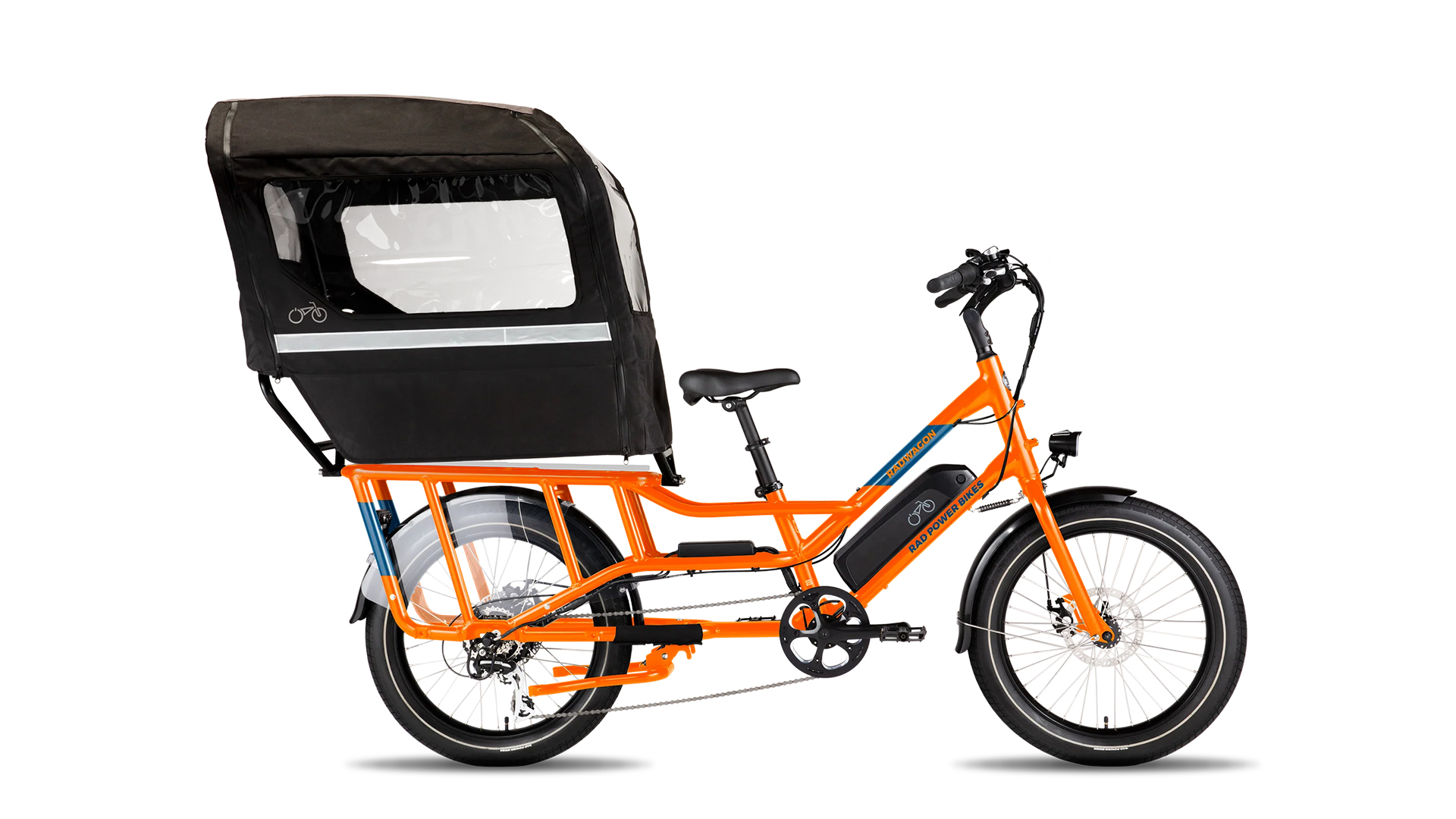
This is probably the question I get asked most often and it is something to consider, but most e-cargo bikes can be specified with rain covers or caboose accessories that shield little ones from the worst of the weather.
Of course, the rider still has to don weather-proof clothing, but if it’s really nasty out, simply leave the cargo bike in the garage and make alternative travel arrangements.
The amount of usage I get out of my faithful machine during the spring, summer and autumn months is enough to justify owning one, even if it does get packed away during the depths of winter.
My eldest came home from school recently and told me that for every minute a car is idling at drop-off time, it produces enough emissions to fill 150 balloons and that 1 in 3 children in the UK breathe unsafe levels of air pollution.
For fast, fuss-free journeys with bulky loads, nothing beats the e-cargo bike and if more people gave them a try, we could collectively clean up local air quality and reduce traffic in our neighbourhoods.
Oh, and the kids are definitely converted.







